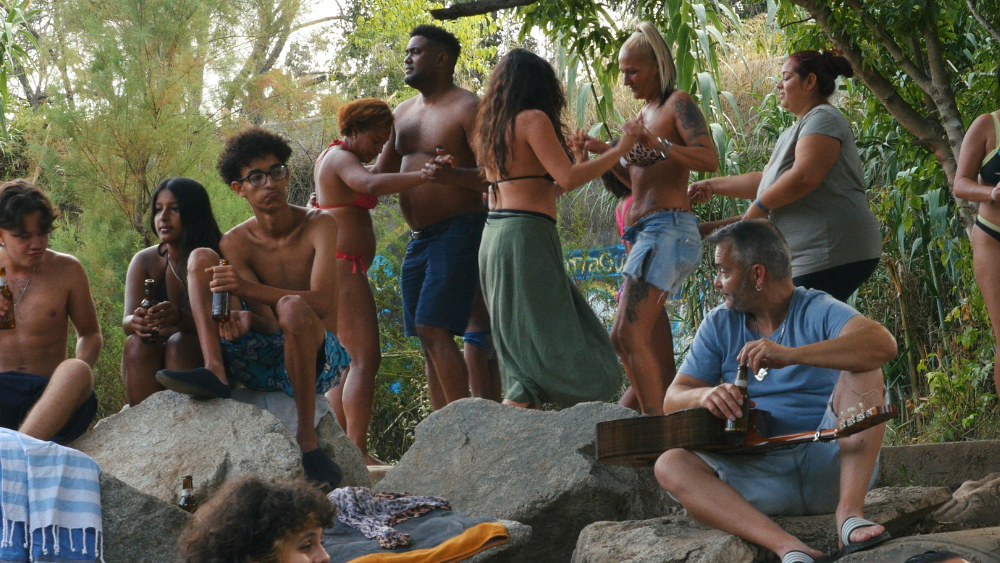Goya-winning Spanish filmmaker José Luis Guerin is back in competition at the San Sebastián Film Festival with “Good Valley Stories” (“Historias del Buen Valle”), almost a quarter of a century after “Work in Progress” played at the Basque fest in 2001. The film takes place over three years in Valbona, a suburban district of Barcelona, as Guerín prods at issues of displacement, identity, urban life, and ecological conflicts in this small neighborhood that serves as a microcosm of the world.
Speaking with Variety ahead of the world premiere, Guerín says he has had his work featured in some of the largest festivals across the world, but for a film like “Good Valley Stories,” it feels right to have the world premiere in his home country. “Some aspects of it will inevitably be lost in other countries, so I feel San Sebastián is the most appropriate place for a first presentation.”
He goes on to recall how the project spawned out of a commission from Barcelona’s Museum of Contemporary Art. “They proposed a small piece about this disadvantaged neighborhood and I gladly accepted it,” he says. “Then I went to this peripheral neighborhood I didn’t know, despite having lived in Barcelona for so many years. I made the piece for the museum super fast, but I was left with the desire to develop that work because I began to discover that the echoes and the resonances of the entire world could be contained in this very small and humble neighborhood. Therein lies the vocation I aspire to as a filmmaker, to find the universal perspective in local realities.”
The filmmaker reiterated how neighborhoods like Valbona feel somewhat universal, given that “gentrification is a worldwide phenomenon.” “City centres are converted into tourist attractions, essentially becoming theme parks inaccessible to the local population. These are people who are then marginalized to the peripheries, where a more human, normal daily life remains. It’s a process we can recognize everywhere.”
But the director did not want to look at the periphery “only as a space of victimization,” especially as he finds great richness in such spaces. “It is the same case with cinema itself, where the spaces that offer most freedom and creativity aren’t so much at the centre of the industry but on these peripheries.”
Guerin spent around a year selecting characters for the film, and added a few more once filming had started, as his method comprises filming and editing concurrently “to allow me to develop a deeper relationship with the people I film while assessing the plot lines.”
“Each of these characters helps synthesize the general human landscape of the neighborhood,” says the filmmaker. “The man without memory is related to the housing blocks that have no memory of the neighborhood. Some characters are farmers who call themselves Catalans of the original land. Others represent the Spanish immigration from the South, and others the global emigration of the new century.”

Good Valley Stories
Courtesy of San Sebastián Film Festival
“All of the world’s current conflicts, from climate change to racism, emigration and real estate speculation, everything is felt there,” he highlights. “There are also traces of the past and signs of the future. So I was coordinating those times with the time of the seasons and finally the time of the film itself. The viewer can intuit how the film is being built, which is why, instead of ‘directed by,’ I go with ’work in progress by’ José Luis Guerín. That will always remain because the film is an open, living process.”
The veteran also emphasizes how one of his great battles is “to promote festivals that don’t discriminate against documentaries.” “On too many occasions, documentary film is seen almost as television reporting. It’s not that documentaries are not a tool for sociological, anthropological, or activist research, but they have to be in dialogue with cinema itself.”
Last week, Variety critic Owen Gleiberman looked at the case of recent festival films like Kaouther Ben-Hania’s “The Voice of Hind Rajab” and James Vanderbilt’s “Nuremberg” to investigate how the use of documentary footage in both films — a recording of a Palestinian girl’s last words, images of the Nazi concentration camps — may be more powerful than the films themselves.
When posed with the question, Guerin says there is a certain condescension in the way the industry looks at documentary as solely a medium for social work and cause-driven films. “If you’re filming the Nuremberg trials, your moral duty is to seek the most accurate image without any manipulation. Cinema sometimes has to know how to give in to a cause, but another thing entirely is to impoverish cinema by attributing to documentary cinema a mere and strict role of denunciation. For me, cinema has to do with a desire for revelation, to discover something.”
“I’ve learned almost everything from fiction cinema, so, for me, the division between documentary and fiction is irrelevant,” he adds. “You have good cinema and bad cinema. To create a separation for documentary is to treat it condescendingly in the same way it is sometimes reduced to the goodness of the causes it approaches. Social cinema must be nurtured, but there is hardly any genuine critical thinking about documentary cinema because there is a guilt about how you might mishandle something that deals with historical memory or denounces conflicts.”
“Good Valley Stories” is a Spanish-French co-production between Los Ilusos Films, Perspective Films, 3CAT, Orfeo Iluso AIE and produced by Javier Lafuente, Jonás Trueba, Gaëlle Jones and José Luis Guerin. Shellac handles sales.

